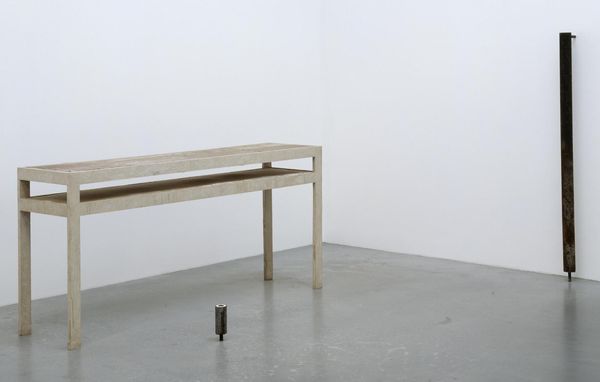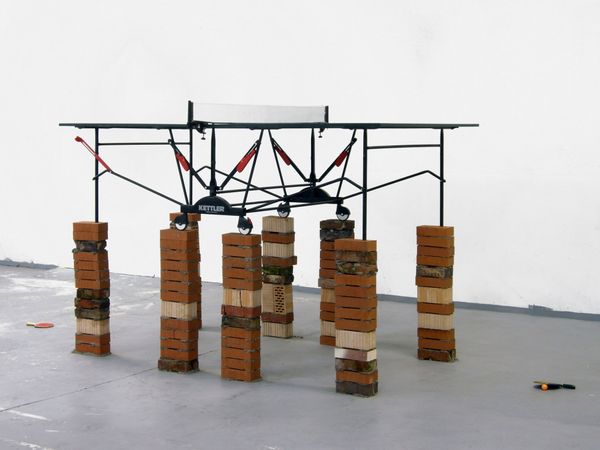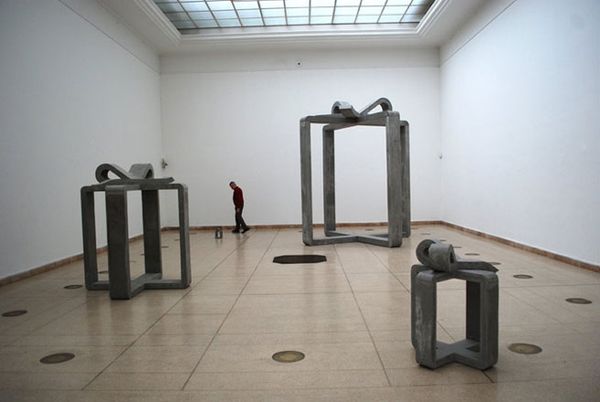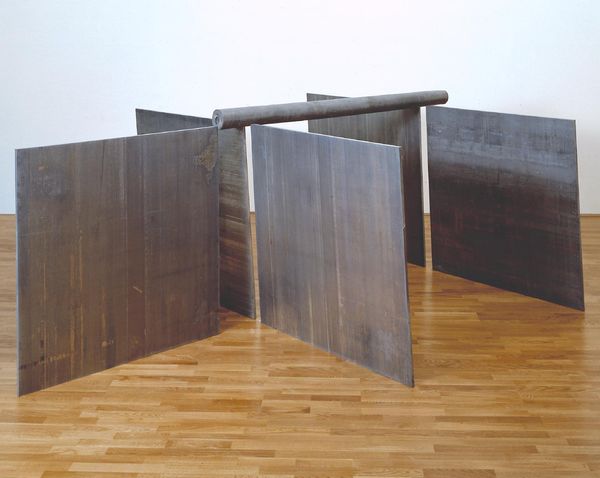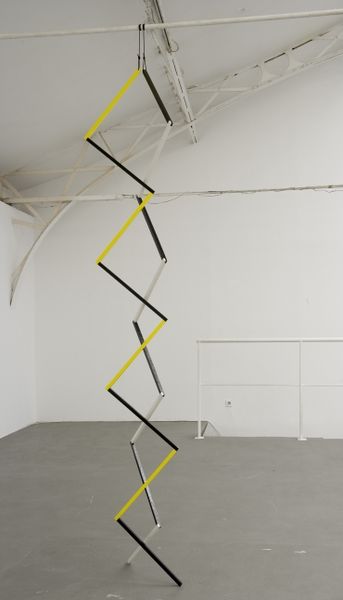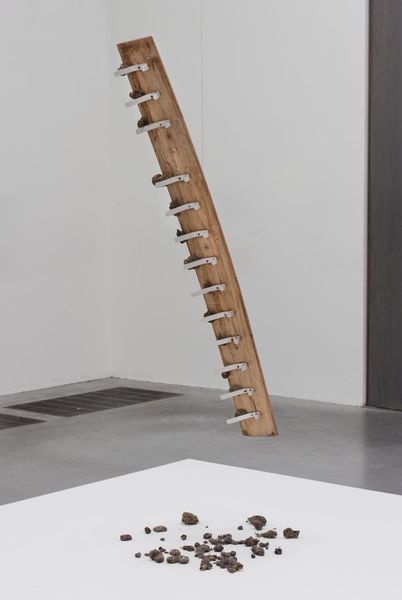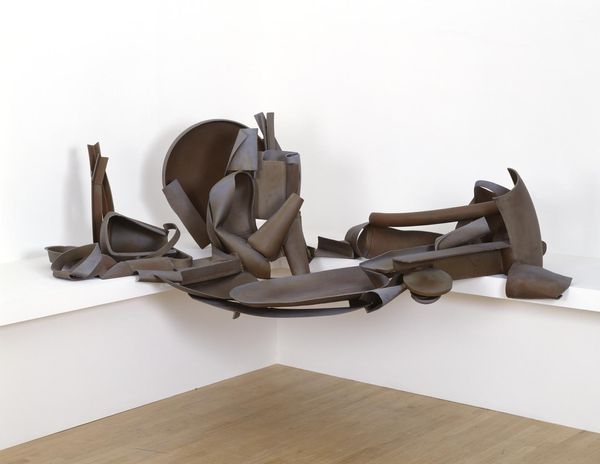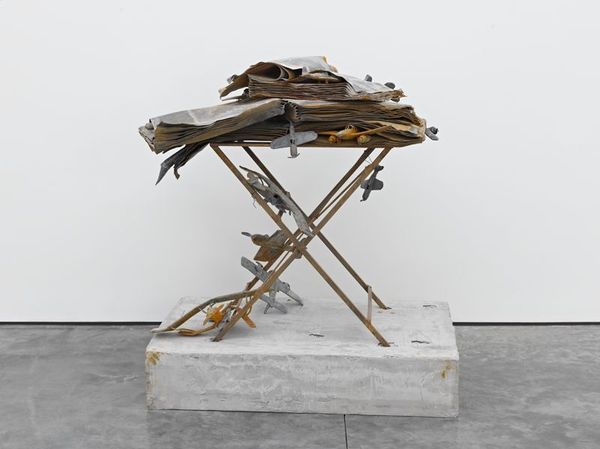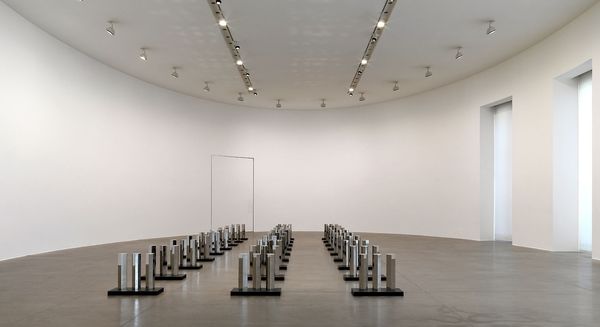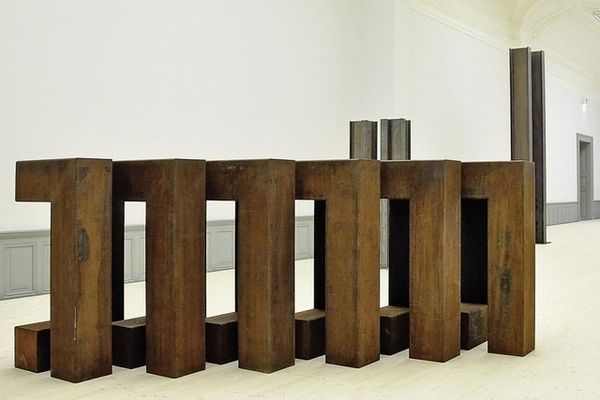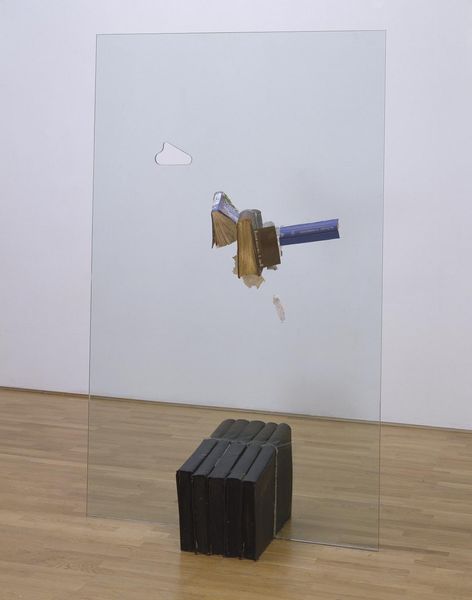
sculpture, installation-art, wood
#
conceptual-art
#
minimalism
#
geometric
#
sculpture
#
installation-art
#
wood
Copyright: Kishio Suga,Fair Use
Curator: Kishio Suga's "Ren-Shiki-Tai," created in 1973, is a striking example of his exploration of materiality and space. It presents a square framework constructed from wood, supported by simple concrete blocks. There are some other minimalist wooden panels placed nearby. Editor: My initial reaction is one of stark simplicity. The rawness of the materials, the exposed wood and unadorned concrete, evoke a sense of grounding, an almost primal connection to the earth. The geometry adds to a certain severity and balance, somehow. Curator: Suga was a key figure in the Mono-ha movement, which emerged in Japan in the late 1960s. Mono-ha artists sought to expose the inherent qualities of natural and industrial materials by presenting them with minimal intervention, and this work is characteristic. He lets us reflect on how materials relate to the world, but more importantly, to each other, and to the architecture of the space they inhabit. Editor: Precisely, and what's powerful is how this translates into a challenge to the social structures reflected in the museum itself. What statements do we wish to make by displaying these kinds of works within these sorts of contexts? Curator: His installations prompt viewers to re-evaluate their perception of reality by challenging traditional notions of art and the relationship between objects, space, and the human body. Its geometry feels calculated yet natural in how it interacts with the viewer. Editor: Indeed. Thinking of those unadorned elements, though – the wood grain, the rough concrete – makes me contemplate how different viewers, based on their backgrounds, would experience such unmediated objects. The piece is minimal, but the context is maximal, the product of larger movements within Japanese history but, here, a dialogue with globalization as well. What conversations are started by viewing it in this context? Curator: Suga’s practice urges us to think critically about our relationship with the environment, both physical and social. His influence continues to be felt in contemporary art, as artists continue to grapple with similar questions of materiality and space. Editor: So, what "Ren-Shiki-Tai" really provides is not merely an object for contemplation, but rather an invitation to engage in critical self-reflection on the systems, people, and environments around us, that we are embedded within daily.
Comments
No comments
Be the first to comment and join the conversation on the ultimate creative platform.
